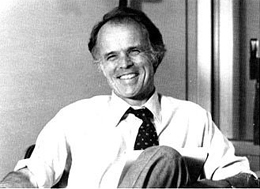On December 21, 1994, Federal District Court Judge William L. Dwyer (1929-2002) upholds the Northwest Forest Plan, in a key National Environmental Policy Act (NEPA) court decision. The case has important repercussions for logging and environmental protection in the Northwest, and it also creates important precedents in interpretation of NEPA, the nation’s environmental protection statute. The decision holds that the federal government’s “ecosystem analysis” approach sufficiently complies with the intent of NEPA. It also, for the first time, emphasizes that compliance is dependent on careful monitoring in the future.
A Forest Management Plan
For decades, the spotted owl controversy had been front-page news in Washington and in the Northwest. The spotted owl couldn’t survive without old-growth forest, yet that habitat was diminishing with the cutting of every giant tree. Early attempts to resolve the interests of the logging industry and the birds -- and the environmental organizations taking on the birds' cause -- had failed.
An earlier Environmental Impact Statement, required under NEPA, had been ruled inadequate in 1992. In 1993, the federal government ordered the Interior Department and the Agriculture Department to create a long-term Forest Management Plan in 1993 with the goal of keeping both the spotted owl and the region’s logging industry alive. A new Environmental Impact Statement was prepared and released in February 1994.
The plan did not please either side. Both the environmental groups (led by the Seattle Audubon Society) and the logging industry (led by the Northwest Forest Resource Council) filed appeals challenging the plan and its new Environmental Impact Statement.
Upholding the Ecosystem Approach
Judge Dwyer rejected both appeals and upheld the Forest Management Plan. Several key passages in his ruling had important implications for future interpretation of NEPA and its Environmental Impact Statement requirements. The Northwest Forest Resource Council had based its challenge on the fact that the plan took an "ecosystem" approach to the problem, in a marked change from earlier practice. In other words, it analyzed the problem for "the entire biological community, not for one species alone" (Seattle Audubon v. Lyons).
Dwyer, in his decision, said, "Given the current condition of the forests, there is no way the agencies could comply with the environmental laws without planning on an ecosystem basis" (Seattle Audubon v. Lyons).
It was the first time a court had "passed judgment on the ... ecosystem approach" and it actually went beyond merely upholding the concept (Cohen and Miller, p. 191). Dwyer applauded the fact that the Bureau of Land Management and the Forest Service were finally cooperating on a plan instead of going their separate ways. He said that the "courts have repeatedly urged" federal agencies to turn from "disparate strategies" to a "cooperative approach" (Seattle Audubon v. Lyons).
In addition, the court decision established another principle of NEPA compliance: the importance of continued monitoring to ensure that the plan works the way it's intended. The key sentence in the court decision reads, "Careful monitoring will be needed to assure that the plan, as implemented, maintains owl viability."
In no other NEPA ruling had "monitoring become so critical" (Cohen and Miller, p. 192).

